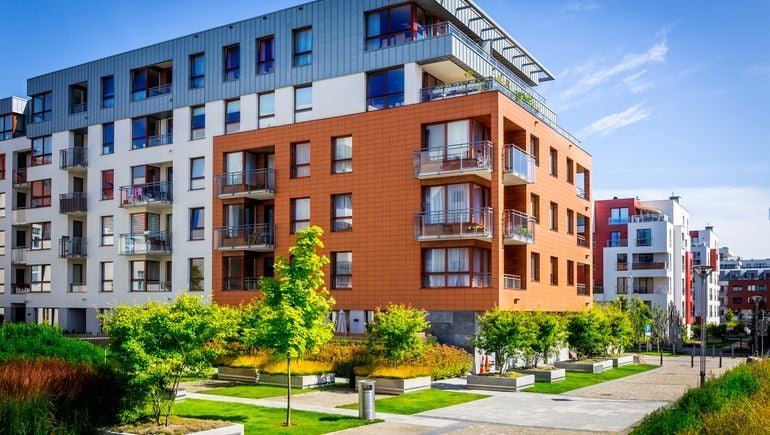Dive Brief:
- The national average asking rent for conventional multifamily properties rose by $7 between May and June, up to $1,726 total, according to the latest National Multifamily Report by Yardi Matrix. Occupancy in this property type remains stable at 95.0%.
- Despite these short term gains, year-over-year rent growth is still falling, down 70 basis points from May to 1.8% in June. This is the lowest rent growth recorded by Yardi Matrix since 2011, excluding the pandemic era when rent growth fell to a low of -0.8% in December 2020.
- The national average rent for single-family build-to-rent properties rose $5 over the same May-to-June period, up to $2,103. YOY rent growth fell 80 basis points to 1.3%, and occupancy remains elevated.
Dive Insight:
Yardi noted that it has refreshed its criteria for the top 30 metros to reflect population growth, multifamily stock and geographic diversity.
Nine out of the top 30 multifamily metros posted negative YOY rent growth in June, largely concentrated in the Sun Belt and West. Despite strong growth over the past several years, demand has cooled in these areas as a wave of new multifamily supply has come online, according to Yardi’s report.
New Jersey, one of the new additions to the top 30, was the top performer for rent growth in June — up 6.5% YOY, followed by New York at 6.3%. Both of them unseated Indianapolis, which has led for the last several months, and now stands in third at 6.1%. Researchers attributed New Jersey’s strong growth to an influx of New Yorkers fleeing to the suburbs, as well as a high immigrant population and growth in its telecommunications and finance industries.
| Market | YOY rent growth, June 2023 | YOY rent growth, May 2023 |
|---|---|---|
| New Jersey | 6.5% | N/A |
| New York | 6.3% | 6.0% |
| Indianapolis | 6.1% | 7.0% |
| Chicago | 4.9% | 4.6% |
| Boston | 4.7% | 4.8% |
| San Diego | 4.5% | N/A |
| Columbus, Ohio | 4.1% | N/A |
| Philadelphia | 3.1% | 3.3% |
| Detroit | 2.8% | N/A |
| Richmond, Virginia | 2.3% | N/A |
SOURCE: Yardi Matrix
Over the last 15 months of federal interest rate hikes, multifamily lenders, including Fannie Mae and Freddie Mac, have seen mortgage volumes plunge. Many borrowers prefer short-term fixed-rate loans, which can be prepaid at a time when rates are expected to decline, according to Yardi.
Bonds issued by the government-sponsored entities carry a weighted average coupon of 6.0%, up from 2.9% in 2021. Properties also now qualify for less debt than they did two years ago — the average loan-to-value ratio stands at 58% now, compared to 69.9% in 2021. If rates remain at this level, Frannie Mae and Freddie Mac are not expected to meet their $75 billion allocation for this year.
At the same time, the interest rate hikes remain a growth driver for the single-family build-to-rent industry, owing to their impact on single-family home sales. Yardi attributes the high demand for single-family BTR units to rising single-family home prices combined with a jump in mortgage rates over the past several years.
For instance, Optimal Blue’s 30-year FHA fixed-mortgage rate index, as cited in the report, stood at 6.6% in late June, more than twice the rate recorded between 2020-2021.
This shift has pushed homeownership out of reach for many buyers. Higher mortgage costs have pushed the differential between renting and owning to over $1,000, according to John Burns Real Estate Consulting, as cited in the report.
At the same time, the number of homes for sale has fallen to half of pre-pandemic levels, as owners with low interest rate mortgages are more reluctant to sell.


